Chili flakes and crushed red pepper are often confused, but they have distinct differences in heat level, texture, and culinary uses. Chili flakes are coarser, made from specific chili varieties (like cayenne or Thai), and typically hotter with complex flavors. Crushed red pepper is a finer blend of red chilies, milder in heat, and blends smoothly into sauces and dressings. This guide explains their key differences, heat levels, best uses, and storage tips to help you choose the right spice for your dishes.
| Feature | Chili Flakes | Crushed Red Pepper |
|---|---|---|
| Texture | Rough, coarse pieces | Fine granules |
| Origin | Variety-specific (e.g., Thai, Calabrian) | Mixed red chilies |
| Flavor | Complex, layered (depends on chili type) | Earthy, mildly smoky |
| Heat Level | Medium to very high | Mild to medium |
| Uses | Topical garnish, bold flavor boosts | Blended into sauces, dressings, rubs |
| Packaging | Small shakers or bulk bins | Bottles or seasoning jars |
What Are Chili Flakes?
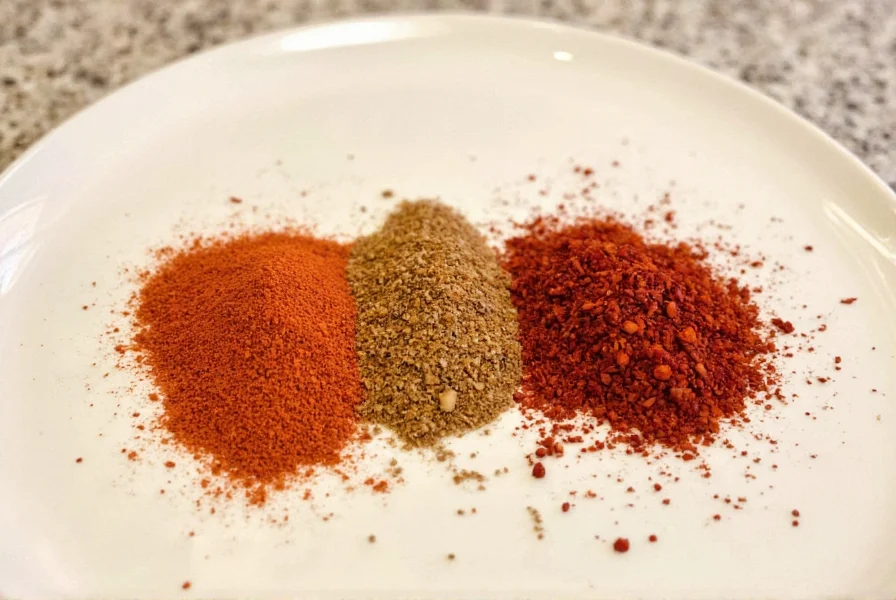
Chili flakes are essentially dried, whole chili peppers that have been broken into small pieces. Depending on the type of chili used (like cayenne, jalapeño, or Thai bird's eye), the flavor and heat level can vary dramatically. They often contain seeds and bits of skin, which contribute to the overall spice kick.
Common Types of Chili Flakes:
- Cayenne Flakes: Medium to high heat, earthy and slightly smoky
- Calabrian Chili Flakes: Fruity, tangy, and moderately hot
- Thai Chili Flakes: Intense heat with floral notes
- Sichuan Chili Flakes: Numbing heat from natural alkaloids (sanshool)
They're commonly found in Mediterranean, Asian, and Italian dishes. Think pizza crusts, pastas, stir-fries, and salsas. Because they retain more texture than ground chilies, they offer both visual appeal and crunch.
What Is Crushed Red Pepper?
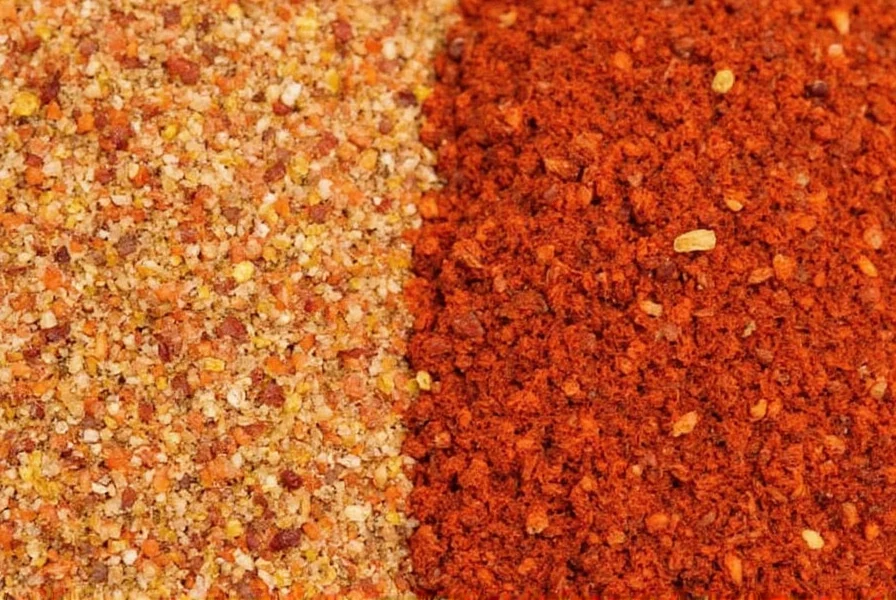
Crushed red pepper, often labeled as "crushed red pepper flakes" in stores, is typically made from a mix of dried red chilies like cayenne, ancho, or paprika peppers. Unlike pure chili flakes, it may be more uniformly processed and sometimes sifted to remove larger chunks and seeds.
Key Characteristics:
- Uniform granules (finer than traditional chili flakes)
- Mild to medium heat depending on blend
- Bright red color and aromatic scent
- Frequently used in mass-produced seasoning blends
You'll often find it sprinkled over pizza, stirred into marinara sauces, or shaken into soups and stews. It dissolves more easily into oils and liquids, making it ideal for infusing flavor quickly.
Heat Levels & Flavor Profiles
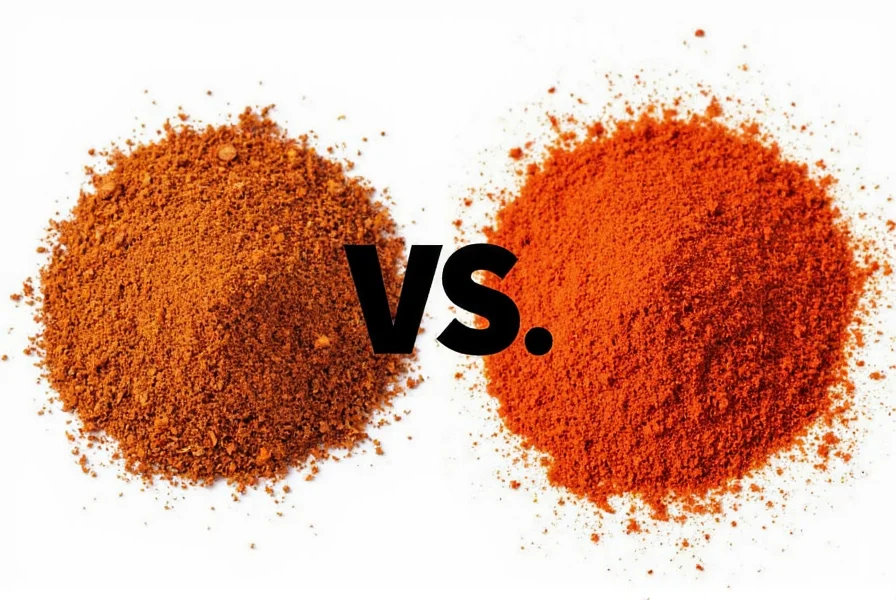
The real difference lies in the intensity of heat and depth of flavor each brings to the table. Here's a quick breakdown based on common types:
Scoville Scale Comparison:
- Chili Flakes:
- Thai Chili Flakes: ~50,000–100,000 SHU
- Cayenne Flakes: ~30,000–50,000 SHU
- Calabrian Flakes: ~25,000 SHU
- Crushed Red Pepper: ~5,000–15,000 SHU
This means that chili flakes can pack a punch that crushed red pepper simply doesn't deliver. However, if you prefer a mellow warmth rather than fiery bursts, crushed red pepper might be your go-to.
When to Use Each Spice
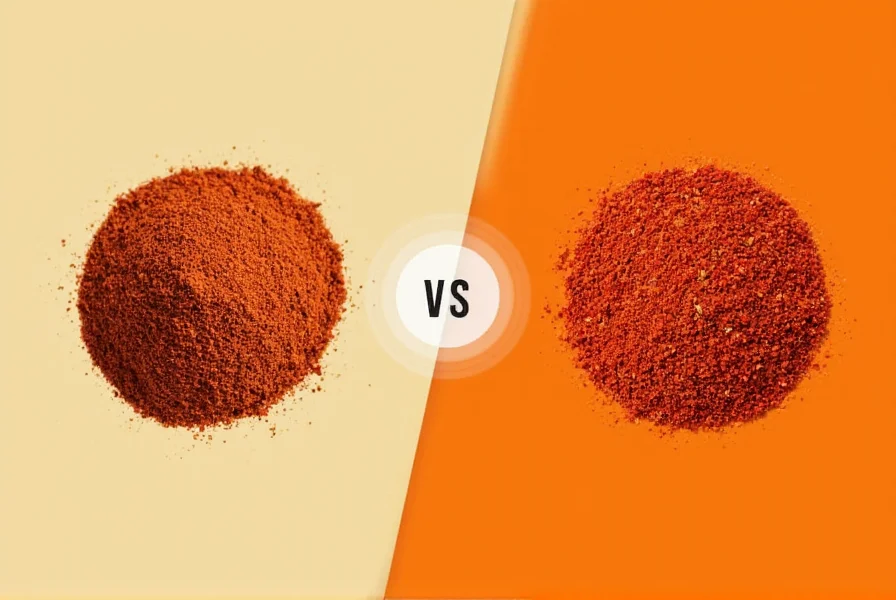
Best Uses for Chili Flakes
- Pizza & Flatbreads: Sprinkle on before or after baking for a bold finish
- Stir-Fries: Add during cooking for a slow-release heat boost
- Pickling & Fermentation: Infuse brines and ferments with layers of flavor
- Hot Sauces: Create homemade versions with fresh or dried flakes
Best Uses for Crushed Red Pepper
- Sauces & Soups: Stir into tomato-based or creamy sauces for mild heat
- Marinades & Rubs: Blends well with garlic, salt, herbs, and olive oil
- Dips & Dressings: Adds a subtle kick without overpowering other ingredients
- Everyday Seasoning: Great for people who want a little spice without drama
How to Store Them
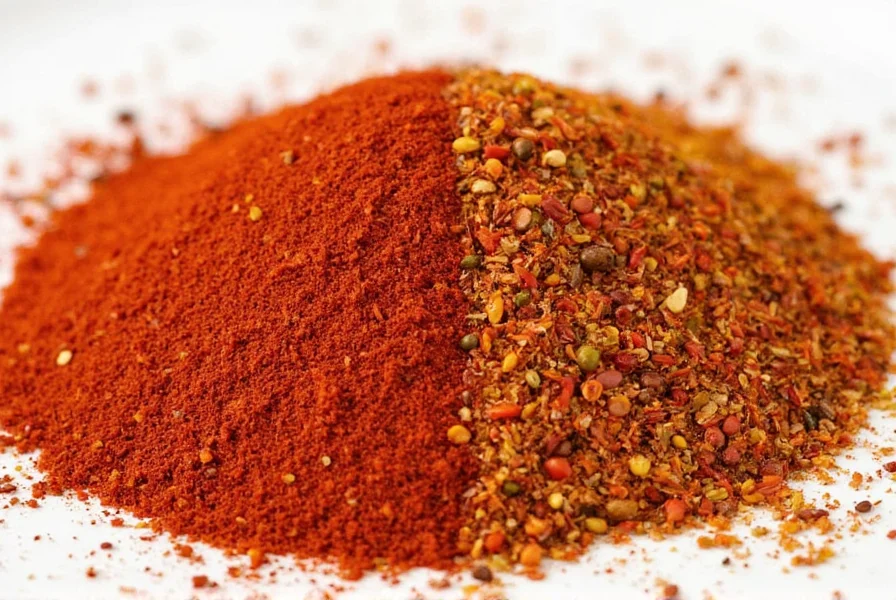
Both spices should be stored properly to preserve freshness and potency:
Storage Tips:
- Keep in airtight containers away from light and moisture
- Store in a cool, dry place like a pantry or cabinet
- Label with dates to track shelf life (best within 1–2 years)
- Avoid grinding until needed — whole flakes last longer
If you live in a humid climate, consider storing them in the fridge or freezer for extended shelf life.
Buying Guide
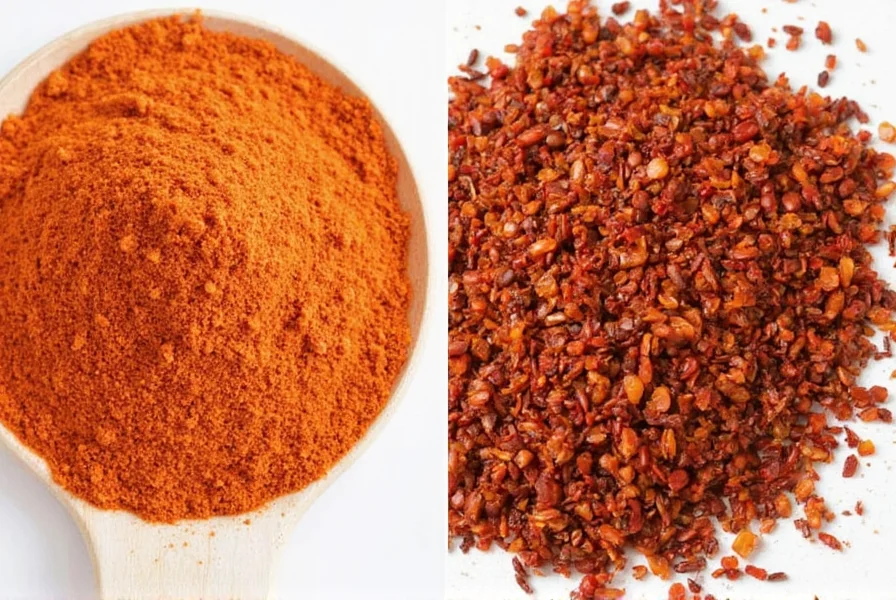
When shopping, not all products are created equal. Here's what to look for:
Factors to Consider:
- Ingredients List: Check if it contains only dried peppers or includes additives
- Brand Transparency: Look for details on chili type, origin, and Scoville rating
- Consistency: Uniform texture and minimal dust indicate quality processing
- Packaging: Resealable bags or glass jars help preserve freshness
Recommended Brands:
- McIlhenny Co. – Authentic Tabasco-style chili flakes
- Diamond Crystal – Consistent crushed red pepper blend
- La Chinata – Artisan Calabrian chili flakes with intense flavor
- Frontier Co-op – Organic crushed red pepper with clean sourcing
Who Should Buy What?
- For Home Chefs: Go for chili flakes for versatility and flavor complexity
- For Everyday Cooks: Crushed red pepper is great for easy, consistent heat
- For Hot Sauce Lovers: Choose chili flakes with higher Scoville ratings
- For Gift Giving: Look for premium artisan sets with unique regional varieties
Frequently Asked Questions
What's the main difference between chili flakes and crushed red pepper?
The main difference lies in texture, composition, and heat profile. Chili flakes are coarser pieces of specific dried chilies (like cayenne, Calabrian, or Thai), often containing seeds and skin, which provides variable heat and complex flavor. Crushed red pepper is typically a finer, more uniform blend of red chilies (often cayenne-based) with seeds sometimes removed, resulting in milder, more consistent heat.
Can I substitute crushed red pepper for chili flakes (or vice versa)?
Yes, but with important considerations. Crushed red pepper is generally milder, so you may need to use about 1.5 times more to match the heat of chili flakes. For texture-sensitive dishes, remember that chili flakes provide visible specks and slight crunch, while crushed red pepper blends in more smoothly. In sauces or dressings where appearance matters less, they're more interchangeable.
Which is hotter - chili flakes or crushed red pepper?
Typically, chili flakes are hotter than crushed red pepper. Most commercial crushed red pepper ranges from 5,000-15,000 Scoville Heat Units (SHU), while chili flakes can range from 25,000 SHU (Calabrian) up to 100,000 SHU (Thai). This is because chili flakes often include seeds and membranes where capsaicin concentrates, while many crushed red pepper blends have these partially removed.
When should I use chili flakes versus crushed red pepper for best results?
Use chili flakes when you want:
- Bold, complex heat with visible texture (pizza, flatbreads, stir-fries)
- Higher heat intensity (hot sauces, spicy marinades)
- Regional authenticity (Calabrian in Italian, Thai in Southeast Asian dishes)
- Subtle, consistent heat that blends smoothly (tomato sauces, soups, dressings)
- Quick flavor infusion without textural distraction
- Everyday seasoning without overwhelming heat
Do crushed red pepper and chili flakes expire?
They don't technically expire but gradually lose potency. For optimal flavor and heat, use within 1-2 years of opening. Store in airtight containers away from light and moisture. You'll know they're losing potency when the color fades from bright red to dull brownish-red and the aroma becomes less pronounced.
Are chili flakes and crushed red pepper the same thing?
No, they're not the same. While often confused (and sometimes labeled interchangeably in stores), true chili flakes come from specific chili varieties with visible texture variation, while crushed red pepper is typically a standardized blend of red chilies processed to a finer, more uniform consistency. The difference is similar to using specialty sea salt versus regular table salt.
How should I store them for maximum freshness?
Store both in airtight containers away from heat, light, and moisture. A cool, dark pantry is ideal. For extended shelf life (especially in humid climates), store in the refrigerator or freezer. Avoid keeping them above the stove where heat and steam can degrade quality. Properly stored, they maintain peak potency for 1-2 years.
Is one healthier than the other?
Nutritionally, they're very similar as both are pure chili peppers. Both contain capsaicin (with potential metabolism-boosting and pain-relieving properties), vitamin C, and antioxidants. The main difference is that chili flakes often retain more seeds (higher capsaicin content), while some crushed red pepper blends may have seeds removed. Neither contains significant calories, sodium, or other nutrients, so health differences are minimal - choose based on flavor needs rather than health considerations.
Conclusion
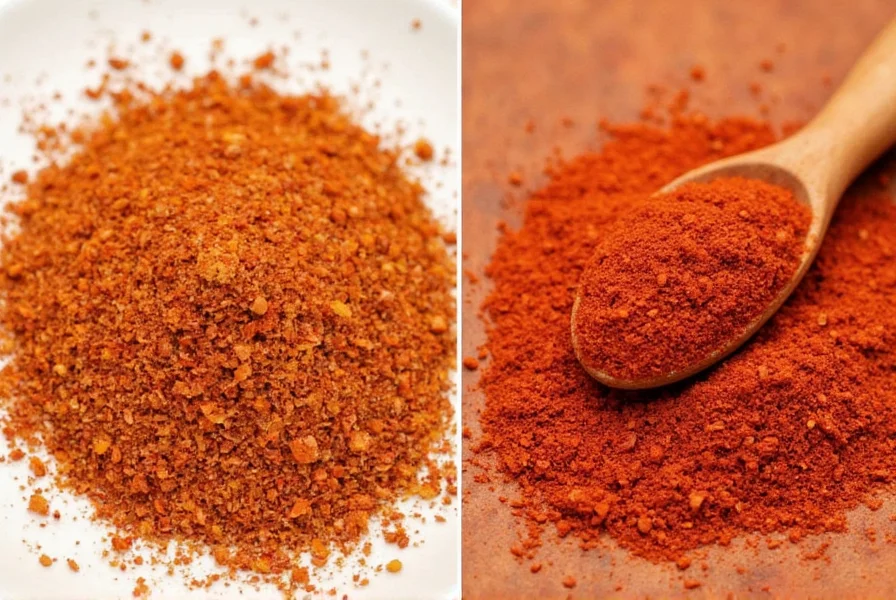
So, which one reigns supreme in your kitchen? The answer depends on your personal preference and culinary goals.
If you're chasing intensity, complexity, and texture, go for chili flakes. But if you prefer consistency, ease of use, and a mild kick, then crushed red pepper is your ally.
And remember — there's no rule saying you can't keep both on hand! In fact, having both gives you more creative control over your meals. Now that you know the difference, go forth and spice boldly!

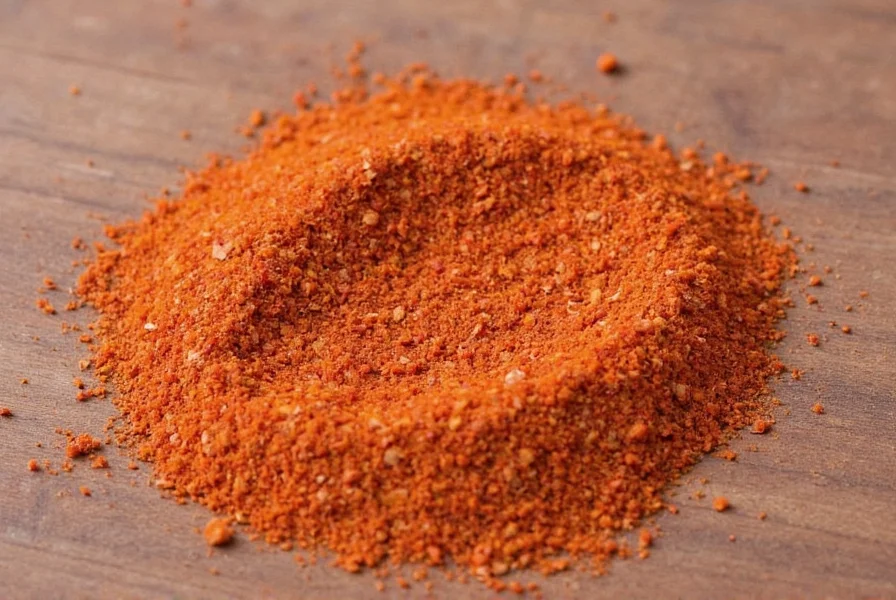









 浙公网安备
33010002000092号
浙公网安备
33010002000092号 浙B2-20120091-4
浙B2-20120091-4